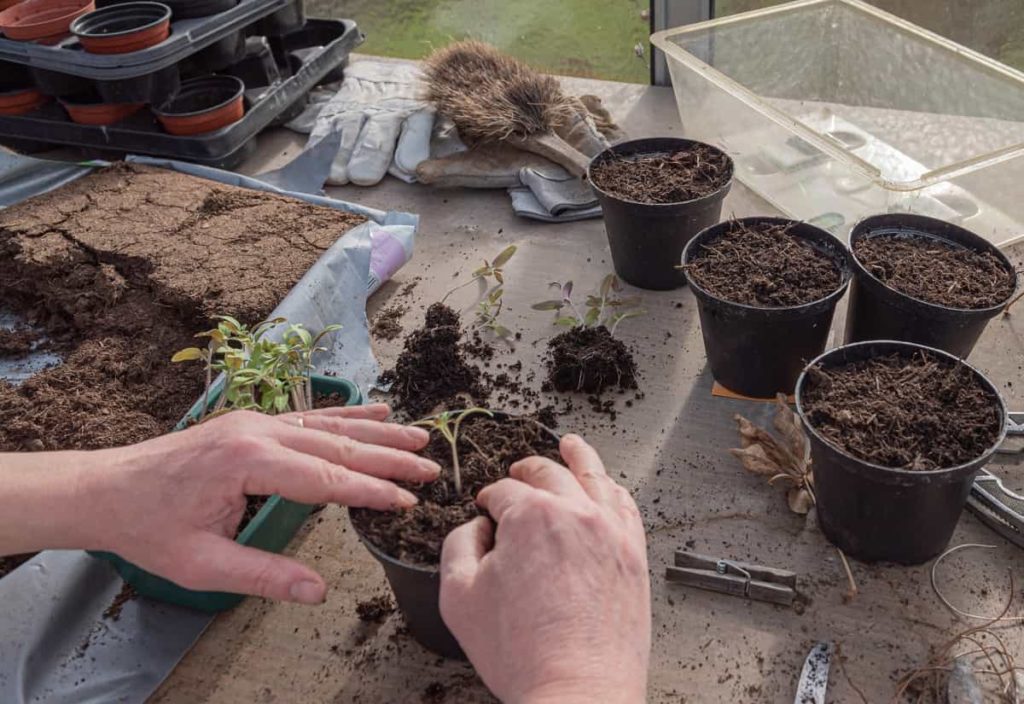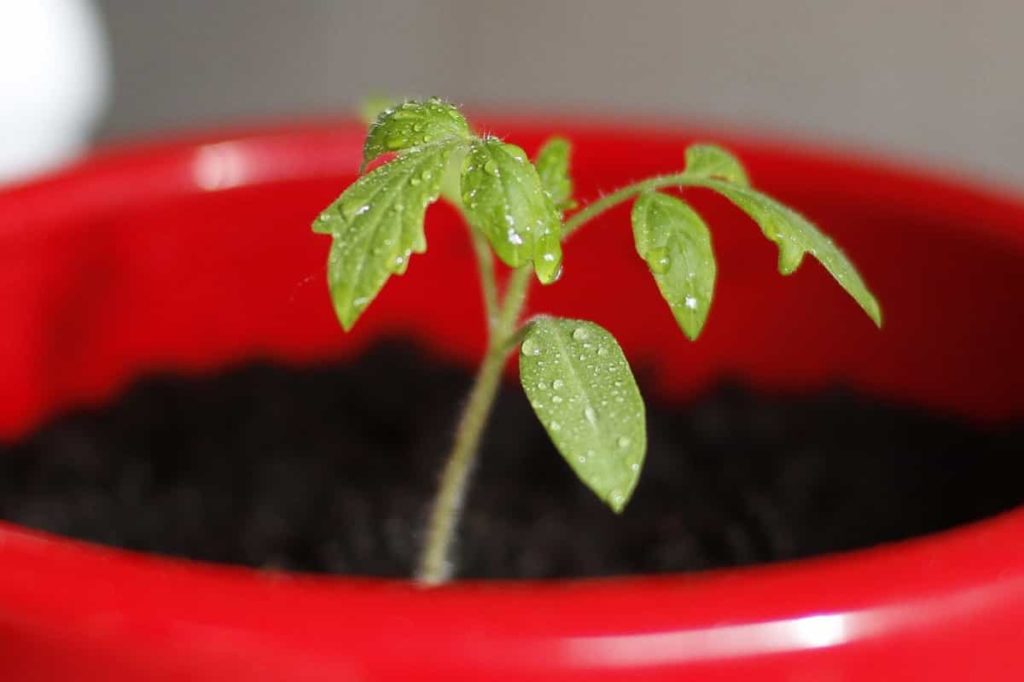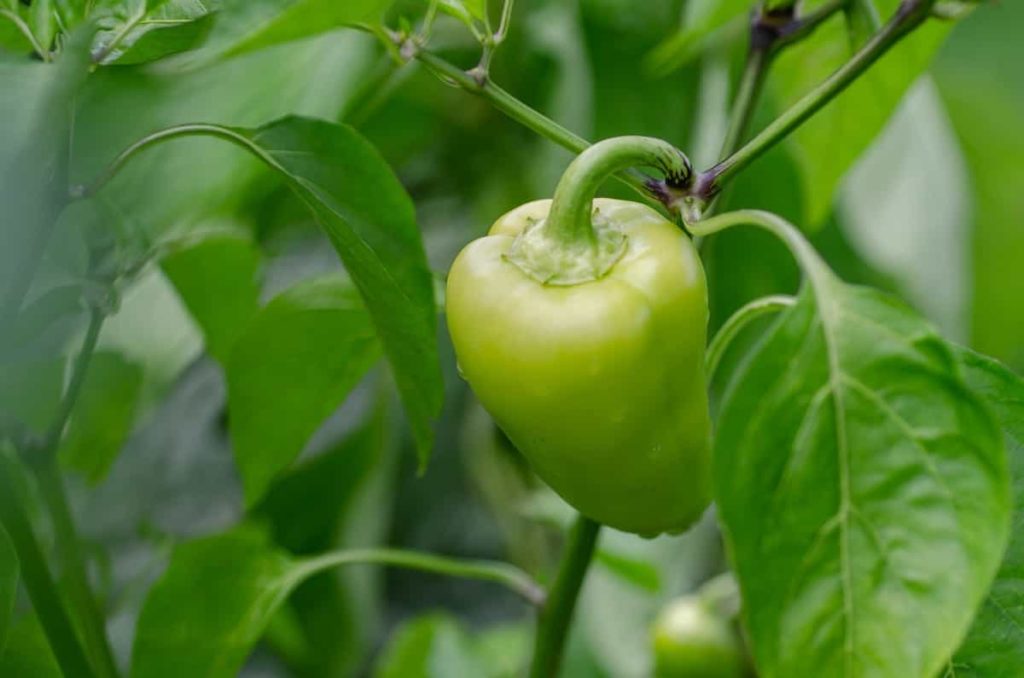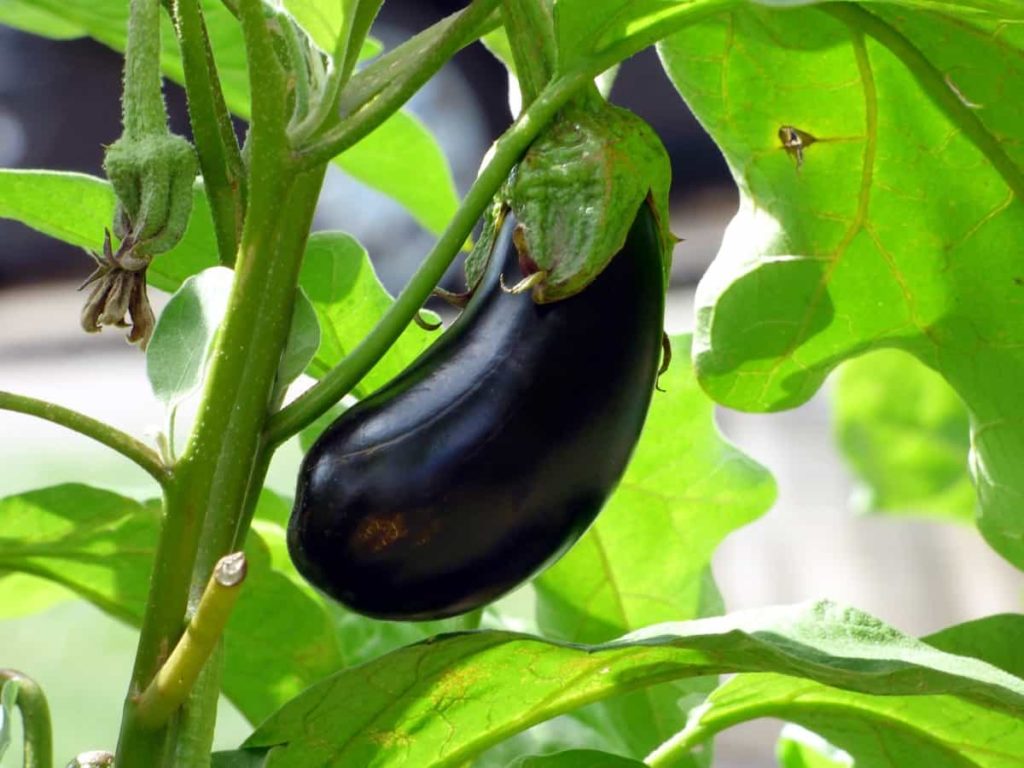Introduction to organic vegetable gardening in the balcony: Vegetables can be grown even without a yard. A sunny balcony and a few containers can help you grow organic vegetables. The best plants to grow in a small space are adapted to small spaces. Consider cultivating determinate or dwarf tomatoes rather than vining, indeterminate varieties if you wish to grow tomatoes. Leafy greens, lettuce, and peppers are excellent choices for a balcony garden.
Guide on organic vegetable gardening in the balcony, the best way to grow organic vegetables, how to start, best vegetables, tips

Best way to grow organic vegetables on a balcony
- Choose vegetables that you enjoy eating and grow on your Balcony based on how much sunlight it receives daily. Most fruiting plants, such as cucumbers and tomatoes require at least five hours of sunlight daily to produce their best results. Choose lettuce, chard, and kale, which need less sun, if your Balcony is partially shaded. The seed packets and seedlings usually indicate how much sun they need.
- Vegetables need to be planted in the appropriate containers. The roots of lettuce, peppers, and greens are shallow, so they only need a container that’s 8 inches deep. The roots of tomatoes are extensive, so they require a minimum of five gallons of space. A variety of containers can be used, including metal, wood, ceramic, and food-grade plastic. So that water does not collect in the soil and cause the roots to rot, each container must have a drainage hole.
- Put the containers on the Balcony in a manner that makes sense to you and looks good. For example, you would place the large pots behind the smaller ones if you had several large and several small pots.
- Three-quarters of each container needs to be filled with organic container mix. Follow the instructions on the seed packet if you are planting from seed. When planting a seed, it’s a good idea to plant it twice as deep as its diameter. Make sure to plant multiple seeds in each container. When planting seedlings, dig a hole twice as large as the plant’s roots. Spread the roots in the soil, then cover with a handful of compost and container mix.
- After planting, water each container thoroughly to ensure that the soil is thoroughly soaked. Because container plants dry out more quickly than in-ground plants, you might need to water them every day.
- Fertilize the containers once or twice a month. Most container mixes contain enough fertilizer to feed your plants for two months. You can then dig a small amount of compost into the container mix or use commercial organic fertilizer.
How to start organic vegetable gardening on your Balcony
Location
Your balcony garden’s location determines what you can grow and what you cannot: The direction it faces and how much sunlight it receives. Sunlight is best. If you have a balcony facing south or west, you will have sun almost every day, which means you can grow anything you want.
However, an east-facing balcony receives sufficient sunlight to grow most greens, herbs, and root vegetables in the morning. In contrast, a balcony with a North exposure is usually shady throughout the year, making it difficult to grow vegetables. Despite this, you can grow lettuce, parsley, peas, cilantro, fenugreek, green onions, bok choy, and mustard greens.
Balcony pots for growing vegetables
Before purchasing pots for your balcony vegetable garden, you must decide whether to grow vegetables for ornamental or practical use. If usability is more important, you can grow many plants together in propagation trays and window boxes. Choose colorful pots, decorative barrels, and urns, as well as modern designer planters for your balcony vegetable garden. Make sure the size of your pot matches the growth rate and requirements of your edible plants.
In case if you miss this: Top 15 Herbs to Grow on the Terrace

In a 3-5 gallons container, you can grow peppers, eggplants, peas, and cherry tomatoes. Large containers can grow tall tomatoes and beans. You can grow vegetable seedlings in a seed tray or a small container to save space. You will need to transplant them into larger pots later. A balcony railing or vertical planter can also be a good option for utilizing limited space. For example, a tower planter is used to grow salad greens, and you can also hang small pots on the railings for herbs.
Soil for planting
Plants grown in pots require loose, well-drained, fertile, and nutrient-rich soil. Commercial potting mixes are available for this purpose. If your Balcony is windy and sunny, you can also add slow-release fertilizer or well-rotted manure or compost to your soil, along with hydrogel crystals. Plant roots receive water directly from the roots of hydrogel crystals, which absorb excess water. If possible, try to determine the pH value of the soil you’re using at home. Vegetables typically grow in soil that has a pH of 6-7. Find your soil type (alkaline or acidic) and amend it for the edible plant you grow.
Preparing seedlings
A seed tray is used to plant vegetable seeds. The top two real leaves should appear after germination. Transplant them when they have grown two true leaves. Planting vegetables in individual pots is a better option for those that don’t transplant well. When transplanted, gourds, melons, turnips, and squash suffer damage. You should either plant them in their preferred location or handle their seedlings with extra care. Purchase vegetable transplants from a local nursery if you do not want to sow seeds. Look for plants that are pest-free and disease-free.
Planting
It is best to do so on a cloudy day with moist soil when transplanting seeds. Young plants will do better if the soil is moist. Planting should take place in the late afternoon or evening on sunny days. Make sure to water the seedlings well before transplanting them. Doing so prevents shock and soil breakdown.
In case if you miss this: DIY Balcony Garden Ideas, Tips, and Techniques

Also, ensure that the seeds are planted deep enough. Tomaten can be planted deeper, covering the first leaves. The adventitious roots stimulate the plant’s strength. Planting lettuce too deep, however, prevents it from bearing fruit. Deep planted celery also does not grow well. Therefore, knowing the proper depth of planting is essential.
A guide to Balcony organic vegetable gardening
- You must take care of your balcony vegetables once you’ve planted them. Watering plants properly is essential. You won’t be able to schedule when you water your plants. Water them as needed.
- Plants are most susceptible to fungi and pests when watered at night, so watering them in the morning is best.
- Watering, fertilizing, and occasionally trimming dead and damaged leaves and removing suckers are the only requirements after the vegetables have adapted to the microclimate on your Balcony.
- It would help if you generally fertilized your plants every two to four weeks with a balanced liquid fertilizer or side-dress your vegetables and herbs twice with compost or well-rotted manure during the growing season.
- Keep removing pests from your plants once you identify them by handpicking or spraying water jets, and grow plants that deter pests.
- If severe pest infestation or disease, use organic pesticide, homemade insecticidal soap, and neem oil.
- If you prefer organic balcony vegetable gardening, you should avoid chemical pesticides and fungicides.
Best vegetables for organic balcony vegetable gardening
Tomatoes
Organic vegetable balcony gardening is one of the easiest ways to grow tomatoes. In a balcony container garden, tomatoes will increase as long as you have access to at least five to six hours of sunlight per day. If you have limited space, try growing dwarf varieties or cherry tomatoes instead of wider varieties. Patio Princess, Sweetheart of the Patio, Tumbler, BushSteak, and Glacier are tomato varieties that work well in containers.
Beans
Pole beans and bush beans can both be grown in containers. If you plant them in a pot that is at least one foot deep and provide them with a trellis-like structure for the vines to climb, you can expect beans that are ready to harvest within a few short weeks. Several varieties are suitable for growing on a balcony, including Bush Blue Lake and Contender. Ideally suited for balconies, the Cherokee Trail of Tears bean is a pole bean. In addition, you can grow Mascotte Green Beans in pots to grow green beans.
Peppers
In addition to tomatoes and radishes, peppers are the easiest vegetable to grow in the balcony garden. The plant will thrive best in a large, deep pot, preferably at least one foot deep. Provide fertilizer to your pepper plants once they bloom and until they produce fruit. Pepper plants suitable for balcony garden include Jalapeno, Early Jalapeno, Numex Twilight, Shishito, Poblano, Bolivian Rainbow, Yellow Spice Jalapeno, Fushimi, and Devil’s Tongue peppers.
In case if you miss this: DIY Terrace Garden Ideas for Home, How to Start

Radishes
You can grow Radishes in containers if you want them to grow fast. Radishes grow well, even in small containers. You will need a container at least six inches deep for small radish varieties and at least 10 inches deep for wider varieties. Radish plants can be grown in more than one container if the container is vast and has a lot of surface area. Each plant should be spaced at least two inches apart to have plenty of room to grow. Depending on the variety, radishes are ready to harvest between 24 and 60 days after planting. Except for the very large cultivars, any radish variety is suitable for containers.
Eggplant
The eggplant is a relatively large vegetable, but if you place them in a pot at least five gallons wide, they will do very well in containers on your Balcony if you provide enough room for each one. Regular fertilization and six to eight hours of direct sunlight each day are required to grow eggplants. To support the weight of the rich eggplant fruits, be sure to provide stakes or cages when your eggplant plants start producing fruit. Among the best varieties of eggplant to grow in containers are Fairy Tale, Crescent Moon, Hansel, Bambino, and Gretel.
In case if you miss this: Top 30 Vegetables To Grow In A Greenhouse

Tips for growing an organic vegetable garden on a Balcony
- You need synthetic soil when planting in containers in your balcony garden. These are best used in containers. Synthetic soil consists of vermiculite, peat moss, sawdust, wood chips, perlite, and other planting media. Putting the soil in the container after filling the bottom with coarse gravel is a good idea. It will improve drainage for your plants.
- Be sure not to forget to water your plants once you have them out on the Balcony. It often happens. It is necessary to water once a day, and more would be overkill. Also, your Balcony will not need to be watered on days when it rains if it gets direct sunlight and has no roof.
- Balcony gardening is an excellent option for any vegetable that is easy to transplant. It is also possible to germinate seeds indoors as you would if you were going to plant them in your backyard and then transplant them to your container vegetable garden on your Balcony when they are ready. If you provide ample moisture and sunlight to your balcony plants, you will grow a significant amount of vegetables. When harvesting your vegetables, be sure they are ripe to the peak. Your balcony vegetable garden will provide you with the best-tasting vegetables. Vegetable gardens on balconies are relatively easy to grow. Ensure you follow the soil condition and container rules listed above, as you would in your backyard. Then your balcony gardens will thrive.
- Plants grown in pots should not be planted in-ground soil, as it is usually heavy and may restrict drainage and contain pests or soil-borne diseases. Instead, use potting soil, preferably potting soil specially formulated for vegetables. Using top-quality organic potting soil is best, and you can mix in some worm castings or compost to add organic matter and improve water retention.
- It’s essential to have a water source nearby since vegetables are very thirsty plants, and they will need a lot of water during the growing season. If you have a water source nearby, you won’t need to carry watering cans long distances to hydrate your plants.
In case if you miss this: Urban Vegetable Gardening Ideas, Tips, Techniques

Commonly asked questions about organic vegetable gardening in the Balcony
1. What is the best way to build a small organic vegetable balcony garden?
A vertical garden is a great way to maximize the space on your Balcony. Stack planters, vertical wall planters, railing planters, and hanging baskets are great options for apartment balcony gardens.
2. How do you make an organic vegetable balcony garden?
- Assess the site first
- Make use of the borrowed landscape
- You can block out your neighbors with large potted plants
- Organize vertically
- Making a balcony more significant can be accomplished by using latticework or a row of plants
- Try to keep it simple
- Practice what you preach
- Don’t forget to water
3. What vegetables can you grow in an organic balcony garden?
- Cucumbers
- Climbing beans
- Chilies
- Salad leaves
- Cherry tomatoes
- leafy vegetables
4. Is it possible to grow an organic vegetable garden in my Balcony?
The same care is required for balcony gardens as for traditional gardens. It would help if you gave your plants direct sunlight, covered the soil in your pots with mulch, and watered them regularly. Creating a compost bin for kitchen scraps could even be helpful. In the winter, keep your garden indoors.
5. Do you know how to put organic vegetables on your Balcony?
Sun-loving plants need to be placed toward the front of the Balcony, where they’ll receive maximum sunlight. Plants that need shade should be placed toward the back of a building or balcony roof where they can be protected from the sun.
- Broccoli Seed Germination and Selection
- Asparagus Seed Germination and Variety Selection
- Seasonal Flower Gardening: Best Practices for Spring, Summer, Fall, and Winter
- How to Grow Hibiscus from Flower
- Plantation Ideas for Home Decoration: A Beginners Guide
- Flower Garden Designs and Layouts for Beginners
- Planting and Spacing Techniques in Papaya: A Beginner’s Guide
- Growing Gold: Essential Techniques for Planting Pineapples
- How to Make Kalanchoe Plant Bushy: Home Remedies and Solutions
- 11 Reasons Why Your Gardenia is Not Blooming: Home Remedies and Solutions
- Eco Elegance: The Guide to Designing a Drought-Tolerant Landscape
- Gardening on a Slope: Strategies for Hillside Landscaping
- Nourish and Flourish: Top Organic Mulches for Thriving House Plants
- Everything You Want to Know about Indian Mogra Flower: Discover Uses and Growing
- Green Thumb Success: Expert Tips for Cultivating Greenhouse Pumpkins All Year Round
- Maximize Growth & Flavor: The Ultimate Guide to Companion Planting in Herb Gardens
- How to Control Rhododendron Problems Naturally: Home Remedies and Organic Ways to Fix Them
- Natural Magic: The Remarkable Benefits of Cinnamon for Plants
- Best Steps to Revive Dying Tulip with Natural and Organic Treatment
- 10 Reasons Why Your Angel Trumpet is Not Blooming: Remedies and Treatment
- How to Fix Periwinkle Leaf and Flower-Related Problems: Natural Remedies and Solutions
- How to Fix Zinnias Leaf and Flower Problems: Discover Natural and Home Remedies
- Organic Steps to Induce Lemon Tree Flowers: A Comprehensive Guide
- Bloom Booster: Crafting the Perfect Homemade Bougainvillea Fertilizer
- Optimizing Growth: A Guide to Applying NPK Fertilizer for Potted Plants
- 10 Best Homemade Fertilizers for Rubber Plant: DIY Recipes and Application Method
- How to Boost Female Pumpkin Flowers: Effective Steps for More Flowers and High Yields
- Transform Your Indoor Garden: Top Benefits of Pink Salt for Houseplants
- 10 Best Homemade Fertilizers for Peacock Plants (Calathea): Easy DIY Guide
- Unlock Blooms: 9 Reasons Why Your Potted Chrysanthemum is Not Blooming
- 8 Reasons Why Your Potted Hibiscus is Not Blooming: Fix it with Simple Solutions
- Unlock Blooms: 9 Key Reasons Your Potted Frangipani Won’t Flower
- 10 Reasons Why Is My Ice Plant Not Blooming: Remedies and Treatment
- 10 Reasons Why My Potted Hydrangea Not Blooming: Treatment and Remedies
- 10 Reasons Why is My Wisteria Not Blooming: Remedies and Treatment
- 10 Reasons Why is My Goldfish Plant Not Blooming: Remedies and Treatment